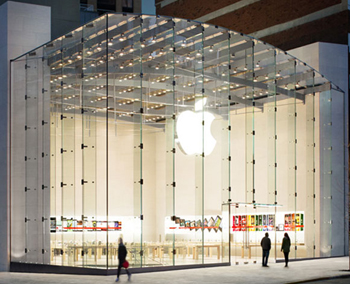Trending
Apple store a good addition to UWS stretch
“Critical mass,” admittedly, is an overused term, unless you take a professional interest in particle physics, and I don’t. But I know it when I see it on the streets of New York, and I have just seen it on the Upper West Side.
As anyone who has walked along Broadway from Columbus Circle to 72nd Street can attest, this stretch of Manhattan has been continually improving over the past 10 years. And as someone who grew up right around there, I can assure you that it is incalculably finer, safer and more fun than it ever was in the 1970s.
But it wasn’t until, on a recent winter evening, that I passed the new Apple Store at 1981 Broadway on the northwest corner of 67th Street, that I understood what was afoot. This part of Broadway is transforming itself, parcel by parcel, from a clamorous confusion of curtain walls, travertine and brick into a corridor of living light.
This year alone, three new events have solidified the transformation. First Diller Scofidio + Renfro completed its magisterial revision of Pietro Belluschi’s façade for Alice Tully Hall. Then, only a few weeks ago, the Harmony Atrium, at 61 West 62nd Street, was transformed by Tod Williams and Billie Tsien as part of Lincoln Center. And now the people at Apple (using in-house designers, with input from Steve Jobs) have created their astounding new store only two blocks up from Alice Tully Hall.
The new Apple store succeeds in being even bolder and more inventive than the cube in front of Edward Durrell Stone’s GM Building on Fifth Avenue and 59th Street. Indeed, it seems to be very nearly unprecedented in Manhattan. It reads as a hugeous glass box, a luxurious expanse of emptiness enlivening the winter night with its clean and pure brightness. As with all Apple stores that I have seen, it is accented, outside as well as inside, with gray slate.
What immediately strikes you as you enter is an abundance of people and a nearly total absence of things. Beneath the towering glass ceiling there are a few low tables arrayed with several ounces of iPods, iPhones and computers. The contrast is surely intentional, to emphasize, in true post-industrial fashion, the sublime immateriality of the latest technology.
As is also the case with the Fifth Avenue store, a great part of this newer arrival is below grade and is accessed by a spiraling glass staircase encased in glass. Never has a basement looked this good before. And New York is the better for it.
James Gardner, formerly the architecture critic of the New York Sun, writes on the visual arts for several publications.





